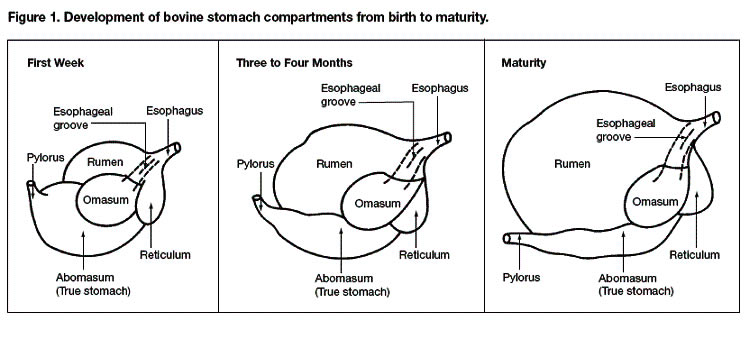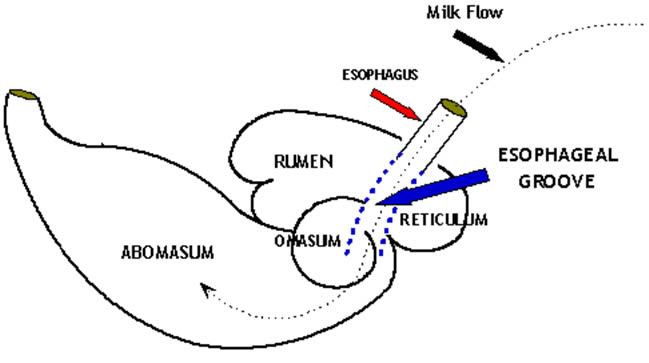Healthy Calf Conference
Follow to stay up-to-date on all Healthy Calf Conference updates. Speaker announcements, sponsorship information, registration announcements, and more.
For the first two weeks of a calf’s life it is a monogastric – or simple–stomached – animal, using only using the abomasum to digest the milk or milk replacer. The abomasum releases digestive enzymes to break down fats, carbohydrates and protein. The energy requirements are met from the absorption of glucose from the abomasum.
When a calf drinks milk, it passes over the rumen to the abomasum via the esophageal groove. The abomasum makes up 60 per cent of a newborn calf’s stomach capacity. By the time the calf is three to four months old, the abomasum makes up 20 per cent of the capacity, and as the animal matures, that shrinks to only 8 per cent of the stomach capacity.
The rumen is made up of two layers: the epithelial layer and the muscular layer. The muscular layer is responsible for rumen contractions and gives support to the epithelial layer, which in turn provides absorption. The end products of rumen fermentation, particularly propionate and butyrate acid, provide the stimulus needed for development of the epithelial layer.
Prior to weaning the rumen must develop to be able to absorb and metabolize volatile fatty acids (VFA). Calves that do not eat dry feed – like milk fed veal – will not develop a functional rumen. It is the grain that develops the rumen and allows the calf to transition from a milk–based to a corn–based diet.
In a newborn calf, the rumen makes up 25 per cent of the calf’s stomach capacity. The rumen is constantly growing and changing, as the calf becomes a ruminant, and by three to four months of age, the rumen makes up 65 per cent of capacity. It is the most important part of the digestive system in a grain fed calf.

Source: Penn State
A calf is born with an esophageal groove, which consists of muscular folds from the reticulorumen that come together to bypass the rumen, reticulum and omasum through to the abomasum when the calf drinks milk. The suckling reflex and milk protein stimulate the groove to open.
Try to avoid letting a calf drink water right after the milk feeding. If it does, the groove will still be open, letting the water into the abomasum. This weakens the clot that is formed and the calf will not digest the milk as well as it should. This occurs until a calf is weaned.

Source: Merrick Animal Nutrition, Inc.
When a calf drinks milk or a milk replacer based from skim milk, it goes into the abomasum. Within ten minutes, the milk forms a clot in the abomasum from the coagulation of milk protein or casein, the enzymes rennin and pepsin, and the hydrochloric acid in the abomasum. Other milk components, primarily whey proteins, lactose and most minerals separate from the curd and rapidly pass into the small intestine (as much as 200 ml per hour). The lactose is digested quickly and, in contrast to casein and fat, provides immediate energy to the calf. The clot is then slowly absorbed by the blood stream over the next 12–18 hours.
Follow to stay up-to-date on all Healthy Calf Conference updates. Speaker announcements, sponsorship information, registration announcements, and more.
The Codes of Practice are nationally developed guidelines for the care and handling of farm animals. They serve as our national understanding of animal care requirements and recommended practices.